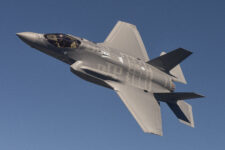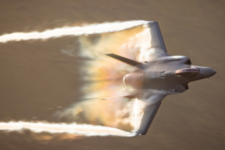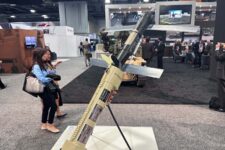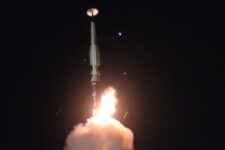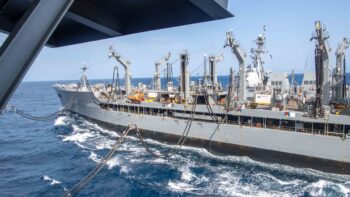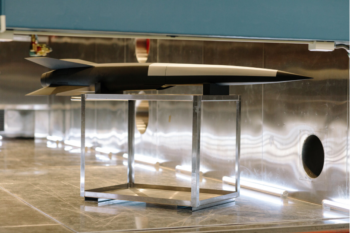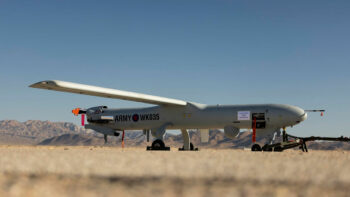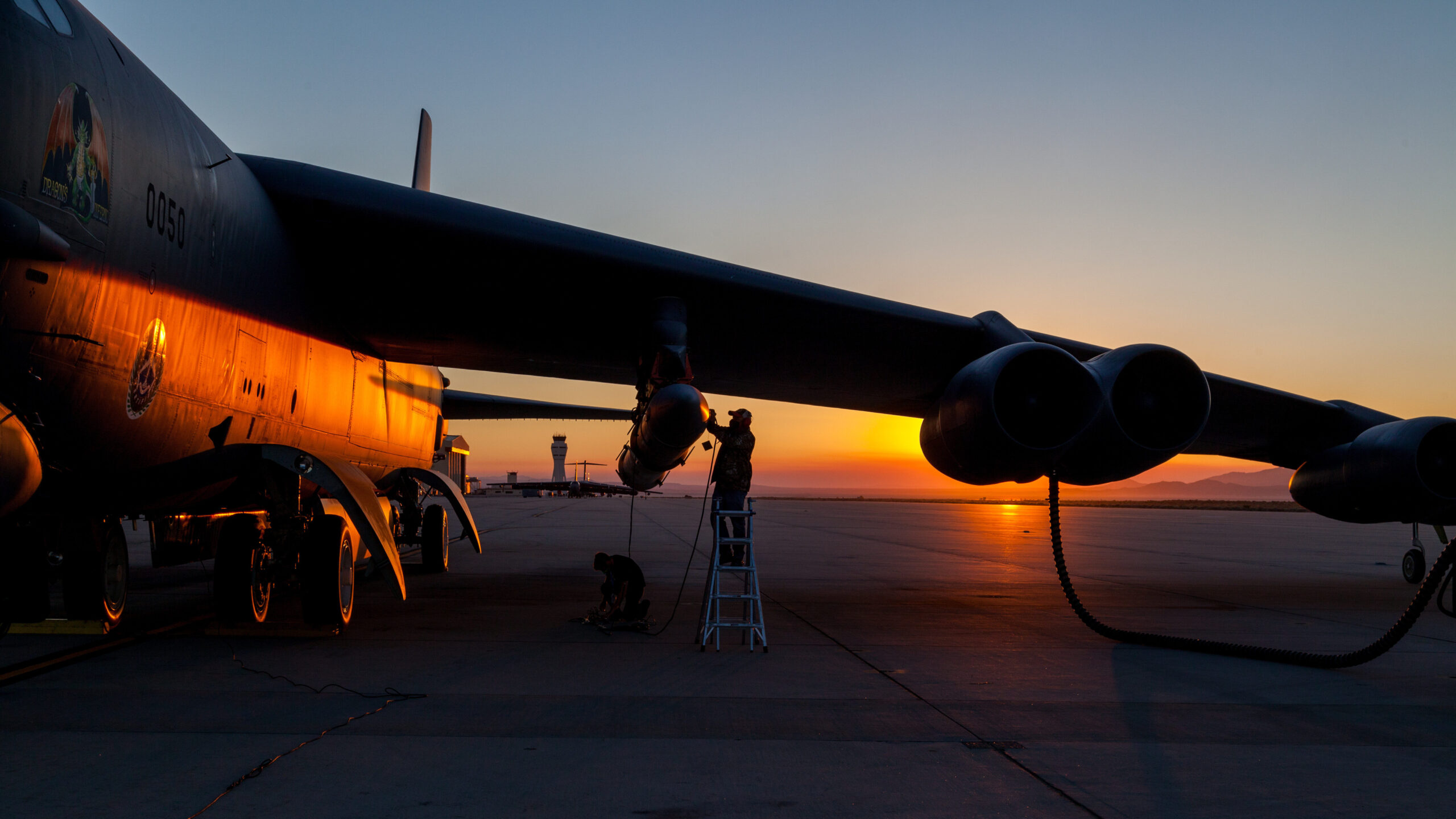
Air-launched Rapid Response Weapon (ARRW), 2020 captive carry test. (Air Force photo by Kyle Brasier)
WASHINGTON — A B-52H Stratofortress took off on March 17 from Andersen Air Force Base in Guam and fired off a test of the hypersonic AGM-183A Air-launched Rapid Response Weapon (ARRW) — the last planned test for the weapon as the service leans toward a different hypersonic offering.
And like some previous tests, the Air Force is declining to say exactly how well the ARRW performed in its final outing over the Pacific.
The test of the operational ARRW prototype took place at the Reagan Test Site, a missile range in the Marshall Islands. The Air Force “focused on the ARRW’s end-to-end performance,” an Air Force spokesperson said in a statement Tuesday.
“The Air Force gained valuable insights into the capabilities of this new, cutting-edge technology. While we won’t discuss specific test objectives, this test acquired valuable, unique data and was intended to further a range of hypersonic programs. We also validated and improved our test and evaluation capabilities for continued development of advanced hypersonic systems,” the spokesperson said.
For the ARRW’s first fully assembled, or all-up-round, test in December 2022, the service categorically called it a success. But the program’s next three tests — in March, August and October 2023 — declined to use that language, raising questions about whether all objectives were met.
Following the March test, Air Force Secretary Kendall admitted to lawmakers the test was “not a success.” The Air Force, he said, was at that point “more committed” to the service’s other fast-flying prototype, the Hypersonic Attack Cruise Missile (HACM).
ARRW is a large, hypersonic glide vehicle mounted on a rocket; HACM is a smaller cruise missile that can be carried by more platforms like fighters. Both are expected to feature traits typical for hypersonic weapons, meaning they can maneuver on the way to their target and travel at speeds greater than Mach 5. RTX is the prime contractor for the HACM program.
In February, a report from the Pentagon’s top weapons tester [PDF] revealed that the Air Force failed to collect data during the March 2023 test for the ARRW’s glide and terminal flight phases due to a malfunction with the weapon’s shrouds, which failed to properly eject. But the March and August 2023 tests still appeared to achieve “nominal conditions, including flight of the glide vehicle and warhead detonation,” according to the report. The October 2023 test was not reviewed.
The report also noted that testing infrastructure has challenged the ARRW program. Although the December 2022 test was deemed a success, test range sensors malfunctioned, preventing the Air Force from fully knowing whether the glide vehicle and warhead performed as intended in the terminal flight phase. Additionally, limited testing ranges meant that earlier all-up-round tests had to be conducted using “broad ocean area impacts,” which limited the data that could be collected.
“Given the limited number of planned test events, there is a risk that the test program will not be able to demonstrate the ARRW lethal effects against the required tactical and strategic targets,” the report said.
After some seemingly mixed signals, officials have said the final ARRW test will inform whether the Air Force eventually buys the weapon. For now, the service is not requesting any procurement funds including for the fiscal year 2025 request unveiled last week, though officials have suggested that could change in future budgets.
After requesting R&D funding to finish off planned tests in FY24, the FY25 budget request does not ask for any similar funding, which budget documents say is “due to completion of the program.” Earlier in the ARRW program, the Pentagon believed the weapon could be its first operational hypersonic weapon as early as 2022.
For its part, ARRW maker Lockheed Martin said that following this last test the company has “completed the test program with full confidence in ARRW’s revolutionary capabilities, and we stand ready to deliver this fully-qualified, hypersonic solution to the U.S. Air Force. Building on ARRW’s industry-leading technology and testing success, Lockheed Martin can quickly deliver additional hypersonic-strike assets that can be rapidly deployed to the U.S. Military.”
Romania signs LOA to secure entry to F-35 club
“This decision marks a significant milestone in Romania’s defense strategy and its commitment to maintaining a robust and advanced military force,” Lockheed Martin said in a statement.
